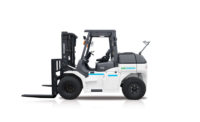As supply chains have become more multifaceted and food processing systems increasingly sophisticated, controlling a facility’s HVAC, lighting and refrigeration operations has developed into an intricate activity that can impact product quality and the bottom line.
Existing building management systems can be a simple solution for operators, but connected technology and the Internet of Things (IoT) are emerging to help streamline operations. By integrating the management of process equipment with building controls, organizations can use one platform to control all systems and improve facility activities.
Addressing operator pain points
Food manufacturers need to keep productivity high, control production and maintain flow practices, allowing employees to focus on producing quality products in a timely manner while also ensuring food safety. Leveraging IoT capabilities for this equipment can provide three key benefits in a processing setting:
1. Reduced equipment downtime. In the food manufacturing industry, it’s crucial that food processing temperatures are consistent and measurable to provide fresh products that are safe for consumers. Inconsistencies or stoppages to automated processes are expensive, but can be reduced by leveraging facility equipment data. In many instances, a facility manager won’t know when equipment broke down or is showing signs of pending failure because it’s not connected. A broken or malfunctioning piece of equipment could be down for an extended amount of time before an employee brings it to management’s attention. Connected equipment has been designed to create alarms in these instances, issuing a warning to quickly alert management of a stoppage or of an imminent failure.
From a maintenance perspective, identifying potential failures before they occur can reduce the amount of equipment downtime and avoid disruption in day-to-day operations. A further benefit of IoT-connected equipment is the ability for administrators to determine the correct diagnosis for the equipment and maintain knowledge of the tools or parts needed for a repair before sending a technician to the site. Using data insights, operators can better inform a technician or contractor about the piece of equipment that broke down and relay other applicable information for that system to assist in making the repair quicker and reducing downtime. This can also eliminate the need for technician callbacks, ultimately decreasing maintenance costs.
Another maintenance benefit is the ability to possibly troubleshoot an issue remotely. Before a technician leaves for the site, triggering trip charges of up to $500 associated with a service visit, IoT empowers the service group to log into a piece of connected equipment and troubleshoot in real-time, and in some cases, fix the issue remotely.
A future benefit for processors is predictive analysis. Currently, end users can easily employ predictive time-based maintenance—similar to getting an oil change for your car every 3,000 miles, whether it’s needed or not. Moving to true predictive signals would allow processors to better understand the needs of the equipment, resulting in increased efficiencies.
The industry is beginning to adopt IoT and a predictive nature of equipment failures, and if OEMs and software providers work together, end users will be able to target issues to prevent equipment failure. This could include determining the error codes to identify a likely breakdown. For example, equipment devices like water flow, ice production, conveyors or motors have signals, and when those signals deviate from normal, they may indicate or predict a pending failure.
2. More efficient equipment management. In order to keep critical facility equipment at a processing site running properly, a modification of the current operation method may need to change cycle time or bypass a command. This helps in further reducing downtime and improving equipment performance. With connected technology, the facility manager now has the ability to know what’s going on and issue a command to alter the process. For example, he/she could reduce run time from one hour to 30 minutes, or signal for a change from bank A to bank B if there are multiple banks on one piece of equipment.
The ability to adapt those changes in real time is the difference needed to move past a read-only position, where capabilities evolve to include reading and writing back a command to that piece of equipment. Read only is the lower level of maturity around IoT. Being able to read and write is a higher level that we are starting to see achieved among partners and equipment manufacturers.
New firmware installation is often done manually onsite. With IoT, the entire installation process can be automated, and more importantly, allows the user to receive confirmation that it’s been updated with the correct specs. The significant benefit is knowing the piece of equipment is correctly calibrated and ready to be operational, which has typically been a time-intensive, manual process.
Knowing basic benchmark data on your equipment is also valuable. This data provides general information to implement a thoughtful capital plan that says, I have three pieces of equipment that are aged and need to be upgraded based upon the firmware and the version. If I have real-time runtime data for the equipment, I can tell how many cycles it’s been through. It might be old, but not used much or relatively new and not operated a lot. This can offer great information for end users and retailers.
3. Increased energy savings. Employing IoT, connected technology can help processing plant managers to better understand the use and scheduling of equipment to accurately and efficiently operate that equipment while saving on energy and reducing overall degradation. The ability to identify poorly performing equipment sooner results in benefits for energy and maintenance operations, improving efficiency more quickly.
Plant managers can track data on equipment use, including how it is being used, for how long and at what time of day. System data can also be extracted and analyzed to gather actionable insights to strategically plan for demand and peak cycles. This can generate savings from a utility standpoint as well. Utilities charge not only for the amount of energy used, but also take into account the time it was used. Significant rate savings can be obtained by working with local utilities to tweak equipment use from peak to off-peak. This helps management establish an optimum schedule of when equipment needs to be operating, the amount of energy to be used and savings attained, in addition to providing strong data insights to discuss savings opportunities with utilities.
As the food processing industry becomes more complex, the use of IoT within existing food processing operations will help adopters to improve facility productivity while reducing maintenance issues and overall operational costs.











